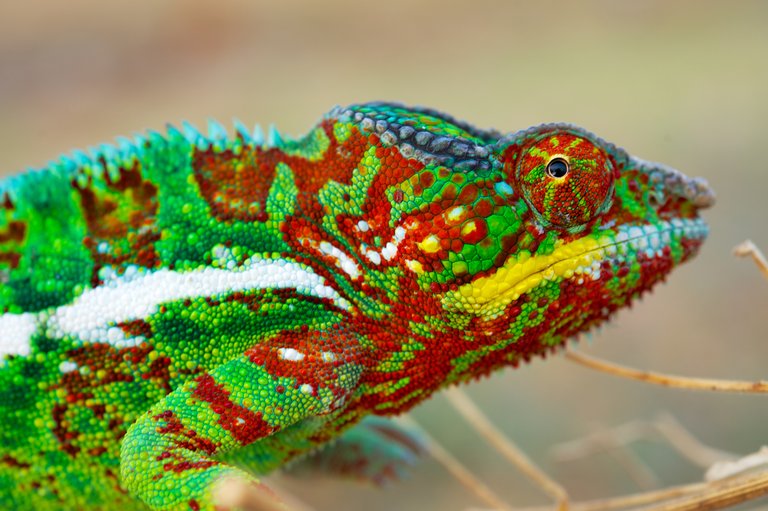Chameleons change color by structural changes in the skin

Chameleons make rapid color changes through superficial structural changes. Researchers at the University of Geneva have found that the skin changes color, causing light to reflect differently, and not accumulating or dispersing pigments like other animals. The work has been published in the journal Nature Communications.
The color change capacity is fundamental for chameleons. This capacity is used for camouflage and for social relations. In the case of Madagascar's Furcifer pardalis chameleon, studied in this study, adult males are the ones with the highest ability to change color. When they are in front of a female or a rival male, in a couple of minutes they pass from green to yellow or orange, the blue spots are peeled and the reds become more intense. Researchers have found that when going from one color to another, the distance between guanine crystals of a surface cell layer increases or decreases (30%).
A second layer with larger guanine crystals has also been discovered. And they have seen that this layer reflects solar radiation, especially the near infrared. Researchers have suggested that the function of this second layer could be to protect from solar radiation. And they add that if they had the capacity to modify the structure of this second layer could also be a thermoregulation mechanism.
In these videos you can see the color change of an adult male F. pardalis. In the first, the change in excitement by the presence of another male, and in the second, the one that is done by getting rid of sight and relax. The videos are accelerated 8 times and the initial image is kept in the small box to better notice the change.
Buletina
Bidali zure helbide elektronikoa eta jaso asteroko buletina zure sarrera-ontzian











